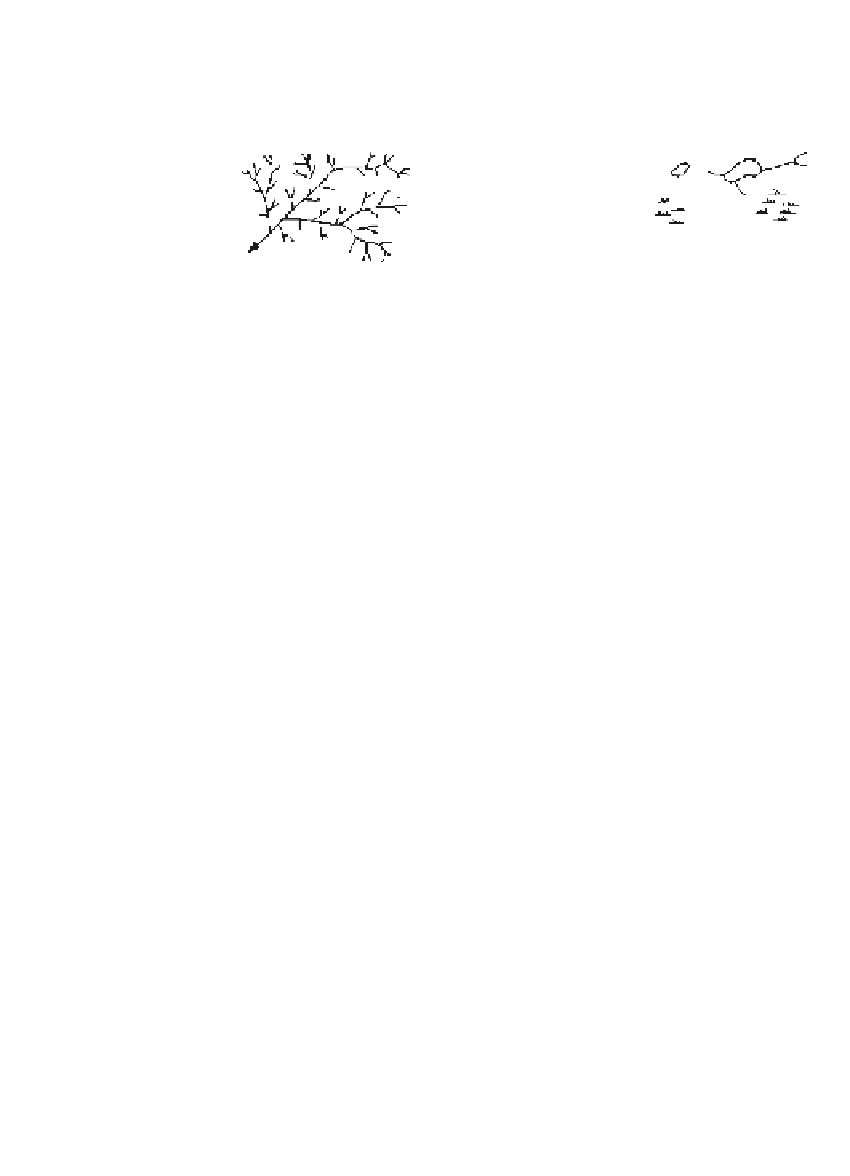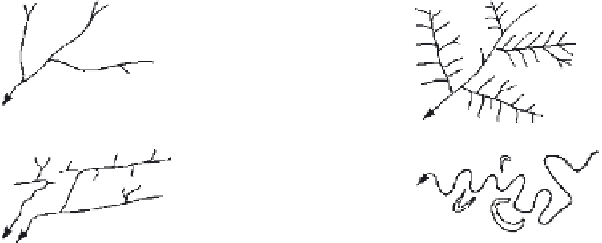Environmental Engineering Reference
In-Depth Information
TABLE 7.4
Typical Drainage Patterns for Various Soil Types and Formations
a
Geologic Condition
Predominant Drainage
Geologic Condition
Predominant Drainage
Pattern
Pattern
Sand sheets, terraces
No surface drainage
Clayey soils
b
Young till plains,
uplifted
peneplains
with impervious
soils
Deranged with ponds
Fine dendritic
and swamps
Clay-sand mixtures
c
Old till plains,
thick
Medium dendritic
Medium dendritic
Sandy soils, some cohesion,
Loess
porous clays
d
Coarse dendritic
Pinnate and dendritic
Coastal plains, mature
Lake beds,
with questas
floodplains
Coarse parallel
Meandering with oxbow
lakes
Alluvial fans
Permafrost regions
Radial braided
Thermokarst
Sheet wash, coalescing
alluvial fans
Parallel braided
a
Drainage patterns given in terms of coarse, medium, and fine textures are for humid climate conditions. Arid
climates generally produce a pattern one level coarser.
b
Coarse: First-order streams over 2 in. (5 cm) apart (on map scale of 1:20,000) and carrying relatively little runoff.
c
Medium: First-order streams ¼ to 2 in. (5 mm to 5 cm) apart.
d
Fine: Spacing between tributaries and first-order stream less than ¼ in. (5 mm).
Mode of Occurrence
As an integral part of the rock mass, the surface expression of residual soils relates to the
rate of rock decay and the effects of differential erosion, and therefore generally reflects the
parent rock type and the original landform (peneplain, mountainous, etc.) as described in
Section 6.7.3.







